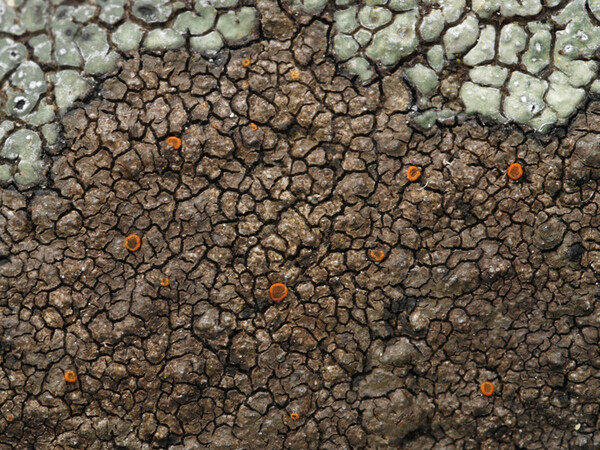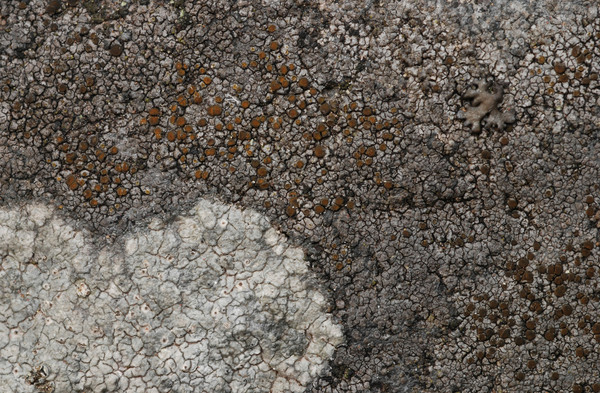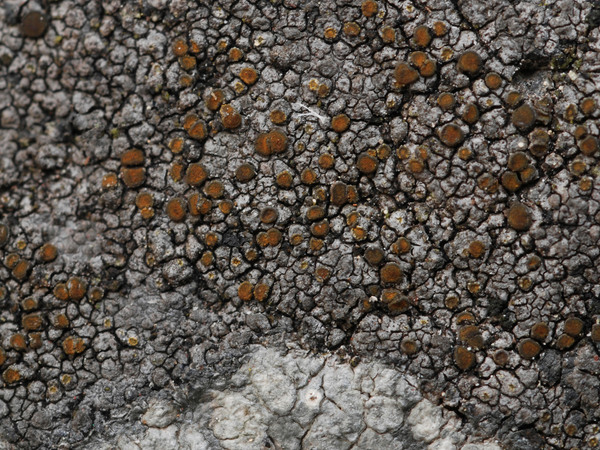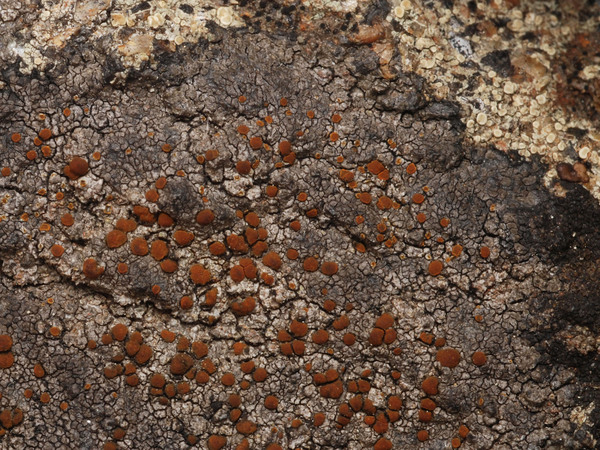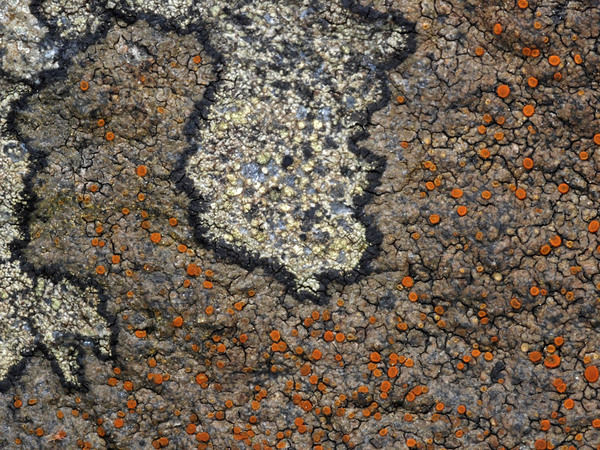Rufoplaca scotoplaca (Nyl.) Arup, Søchting & Frödén
Nord. J. Bot., 31: 74, 2013. Basionym: Lecanora scotoplaca Nyl. - Flora: 232, 1876.
Synonyms: Biatora caesiorufa auct. p.p. non (Wibel) Fr.; Caloplaca caesiorufa auct. p.p. non (Wibel) Flagey; Caloplaca scotoplaca (Nyl.) H. Magn.
Distribution: N - TAA, Lomb, Piem, Emil (Valcuvia & Delucchi 2001, Fariselli & al. 2020). C - Tosc, Laz, Sar (Rizzi & al. 2011). S - Camp, Si.
Description: Thallus crustose, episubstratic, thin, continuous to rimose-areolate, ash-grey to dark grey-brown, the areoles 0.2-0.4 mm wide, 0.1-0.2 mm thick, irregular, flat to uneven, separated by very thin, often indistinct cracks. Apothecia adpressed, circular to angular by mutual compression, 0.2-0.4(-0.5) mm across, with a flat to slightly convex, bright to dark rust-red, finally sometimes blackening disc, a thin, mostly persistent, at first paler, then concolorous (or blackened), rarely excluded proper margin, and a grey thalline margin which is evident at least in young apothecia. Proper exciple brownish yellow in outer part, colourless within; epithecium brownish yellow, interspersed with orange-yellow crystals of anthraquinones reacting K+ red; hymenium colourless or yellowish in upper part, 60-70 μm high, amyloid; paraphyses simple or sparingly branched in upper part, c. 1.7 μm thick at base, the uppermost cells swollen and 4-5 μm wide; hypothecium 20-50 μm high, colourless to greyish, I+ dark blue. Asci 8-spored, clavate, functionally unitunicate, apically thickened with a broad internal beak, the inner part of apex and external cap I+ blue, Teloschistes-type. Ascospores 2-celled, polarilocular, hyaline, narrowly ellipsoid, 10-13 x 4-5(-6) μm, the equatorial thickening (“septum”) (2-)3-4(-5) μm, 1/4-1/3 of spore length. Photobiont chlorococcoid. Spot tests: thallus K- or K+ weakly violet in section, C- or C+ violet (reaction visible only in sections) KC-, P-; disc of apothecia K+ red. Chemistry: thallus with the Sedifolia-grey pigment; disc of apothecia with non-chlorinated anthraquinones.Note: at least in Southern Europe this lichen of basic, hard siliceous rocks has been much misunderstood; several earlier Italian records, especially those from outside the Alps, need confirmation, as well as those from Sardinia (see Nimis & Poelt 1987: 74).
Growth form: Crustose
Substrata: rocks
Photobiont: green algae other than Trentepohlia
Reproductive strategy: mainly sexual
Poorly known taxon in need of further study
Commonnes-rarity: (info)
Alpine belt: absent
Subalpine belt: absent
Oromediterranean belt: very rare
Montane belt: very rare
Submediterranean belt: absent
Padanian area: absent
Humid submediterranean belt: extremely rare
Humid mediterranean belt: extremely rare
Dry mediterranean belt: absent
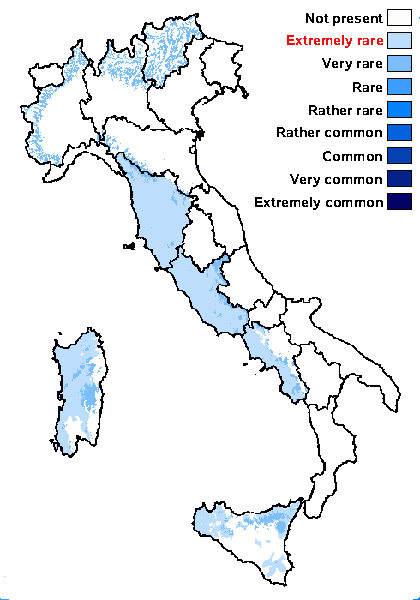
Predictive model
Herbarium samples
Growth form: Crustose
Substrata: rocks
Photobiont: green algae other than Trentepohlia
Reproductive strategy: mainly sexual
Poorly known taxon in need of further study
Commonnes-rarity: (info)
Alpine belt: absent
Subalpine belt: absent
Oromediterranean belt: very rare
Montane belt: very rare
Submediterranean belt: absent
Padanian area: absent
Humid submediterranean belt: extremely rare
Humid mediterranean belt: extremely rare
Dry mediterranean belt: absent

Predictive model
| Herbarium samples |
 Index Fungorum
Index Fungorum
 GBIF
GBIF
